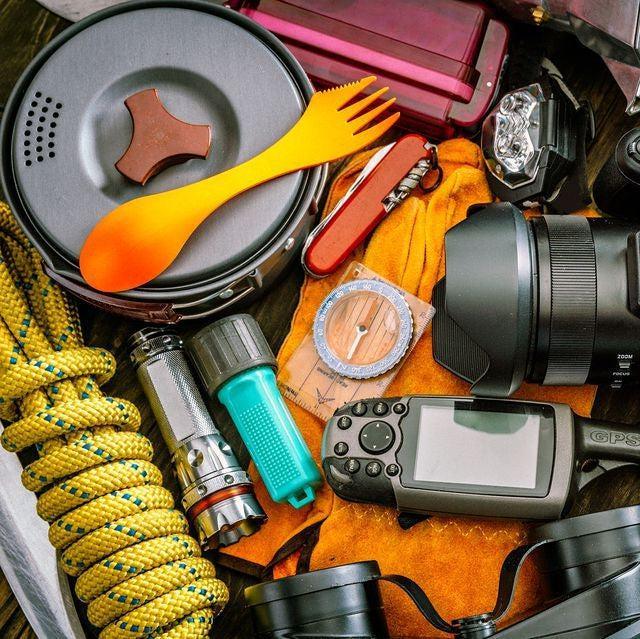
How To Get A Ham Radio License for SHTF
Share
How To Get A Ham Radio License for SHTF
If you are one of those preppers, survivalists, or "preparedness minded persons," and your SHTF plan is to get your butt into a cabin and hide out for awhile with enough supplies to last you through the apocalypse, then you need to know this: an emergency radio could be the difference between life or death.
What is a Ham Radio?
A Ham Radio is a portable radio that allows you to communicate with other ham radio operators around the world. It can be used for emergency communications, or just for fun. Getting a ham radio license is not as difficult as you might think, and it can be a great way to be prepared for when SHTF.
Types of Ham Radios
There are three main types of ham radios: base, mobile, and handheld. Base radios are the largest and most powerful and are usually stationary in one location. Mobile radios are smaller and can be mounted in a vehicle, while handheld radios are the smallest and most portable.
Which type of ham radio is best for you depends on your needs and preferences. If you plan on using your radio mainly for emergency communications, then a handheld radio might be the best option since it can be easily carried with you wherever you go. If you want to be able to communicate with other ham radio operators while on the move, then a mobile radio would be a better choice. And if you want the most power and range for your money, then a base radio would be the way to go.
Getting Your Amateur License

So, you want to get your amateur radio license and be prepared for when SHTF? Here's what you need to know.
First, what is amateur radio? Amateur radio is a wireless communications service that hobbyists use to communicate with each other using radios, computers, and other electronic devices. It's a great way to stay in touch with friends and family during an emergency, and it can also be used for entertainment and educational purposes.
To get your amateur radio license, you'll need to pass an exam administered by the Federal Communications Commission (FCC). The exam consists of two parts: a written test and a practical test. The written test covers basic electronics and radio theory, while the practical test is designed to assess your ability to operate a radio station safely and correctly.
You can study for the exams on your own or take a class from an accredited institution. Once you've passed the exams, you'll be issued a license that is valid for 10 years. After that, you'll need to renew your license every 10 years to keep it active.
So there you have it! Getting your amateur radio license is a great way to be prepared for when SHTF. Good luck!
Technical FCC Requirements
There are three main types of FCC licenses: Technician, General, and Amateur Extra.
- Technician license is the entry-level license and requires passing a 35-question multiple-choice examination.
- General license requires passing a 35-question multiple-choice examination and a 5-wpm Morse code test.
- Amateur Extra license is the highest level of license and requires passing a 50-question multiple-choice examination.
All three examinations cover basic regulations, station operation, and electronic principles. In addition, the General and Amateur Extra examinations include questions on operating procedures, radio wave propagation, antennas, and electrical safety.
Ham Radio Frequencies and License Classes

When it comes to emergency communications, ham radio is one of the best ways to stay connected. But what frequencies should you use, and what license class should you get?
There are three main classes of ham radio licenses: Technician, General, and Extra. The Technician class is the entry-level license, and gives you access to all VHF and UHF frequencies. The General class gives you access to all amateur radio frequencies, and the Extra class gives you the ability to operate on any frequency.
So which one should you get? If you're just getting started, the Technician class is a great place to start. But if you're serious about emergency communications, then the General or Extra class is a better choice.
As for frequencies, there are three main bands that are used for emergency communications: 2 meter, 70 cm, and 1.25 meter. The 2 meter band is the most popular choice for emergency communications, as it has good range and is relatively easy to use. The 70 cm band is also a good choice, as it has even better range than 2 meters. And the 1.25 meter band is a good choice for close-range communications.
The Tech Behind Ham Radios
When it comes to communications during a disaster, ham radios are often seen as the best option. They’re reliable, they don’t require any infrastructure, and anyone can use them. But what exactly are ham radios, and how do you get a license to use one?Ham radios are short for “amateur radios,” and they’re just that: radios used by hobbyists and enthusiasts. But in an SHTF scenario, ham radios could be invaluable. They can be used for everything from coordination during disaster response to checking in with loved ones to simply passing the time.
An Example Of A Long Distance Contact
One of the great things about ham radio is that it can be used to communicate over long distances.
On October 8, 2015, Ham Radio Operator Tonya K1QED made contact with another ham radio operator in Argentina. The contact was made using voice (SSB) on the 20-meter band. Tonya was using 100 watts of power and her antenna was a simple wire dipole.
The contact between Tonya and the Argentinean ham radio operator was brief, but it's a good example of how ham radio can be used to communicate over long distances. With a little bit of practice, you too can make contacts with hams all over the world.
My Experience Getting a Ham Radio License
I decided to get my ham radio license for when SHTF after seeing how useful it can be in an emergency situation. I went through the process of taking the test and becoming licensed, and it was a lot easier than I thought it would be. Here's my experience in getting a ham radio license.
The first thing I did was study for the test. I found a few good resources online that helped me understand the material. Once I felt confident that I knew the material, I scheduled a time to take the test.
Taking the test was simple and straightforward. I was able to answer all of the questions correctly and pass with flying colors. After passing the test, I had to submit my application for a license to the FCC.
The process of getting my license was quick and easy. Within a few weeks, I received my official ham radio license in the mail. Now, I am prepared for when SHTF and can use my ham radio to communicate with others in an emergency situation.


